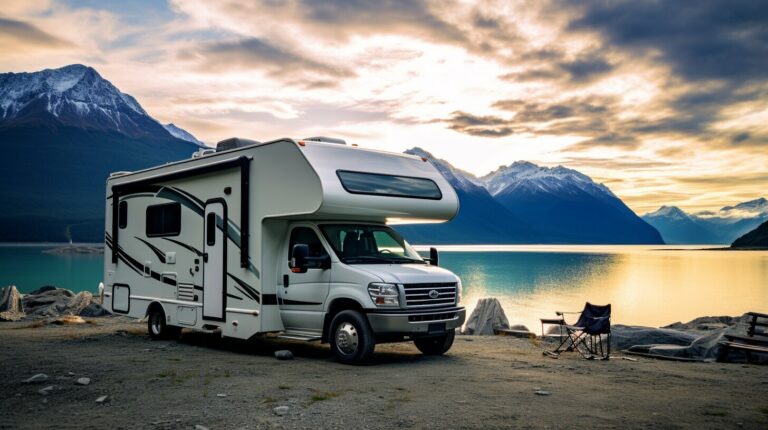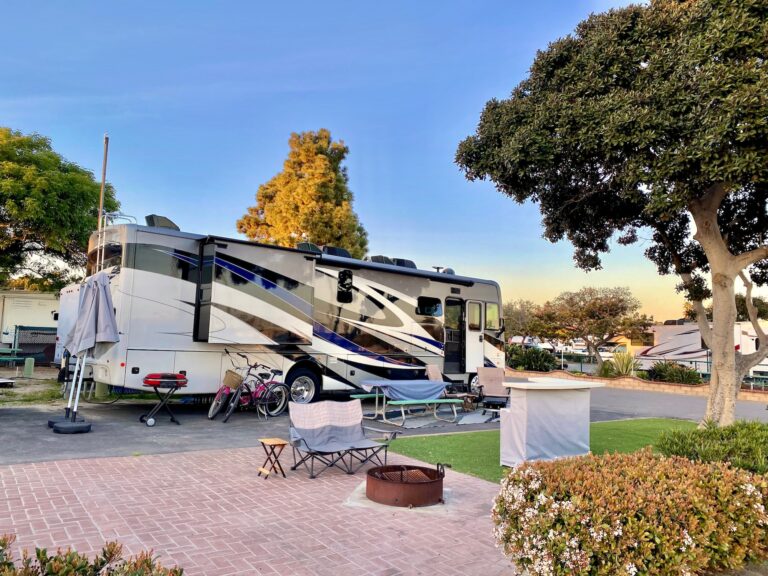Whether you’re taking your first cross-country trip or setting out on a weekend getaway, the adventure of RVing is like no other. However, as a new RV owner, there’s a lot to learn about maintaining your home-on-wheels, and one of the most critical components to keep in mind is your RV’s tires. They are the foundation of your journey, and their care and maintenance can make a significant difference in your RV’s performance and safety. This comprehensive guide will walk you through the basics of RV tire care, ensuring their longevity and your safety on the road.
Understanding Your RV Tires
RV tires are uniquely designed to handle the weight and demands of a motorhome. They come in various sizes and types, each suitable for different kinds of RVs and uses. Understanding your tires is the first step in proper tire care.
1. Types of RV Tires
There are mainly three types of tires used on RVs: ‘LT’ for light truck, ‘ST’ for special trailer, and ‘P’ for passenger vehicle. LT tires are often used on motorhomes, ST tires are designed for trailers, and P tires are typically found on smaller motorhomes and vans.
2. Tire Size and Load Ratings
Tire size and load ratings are displayed on the tire’s sidewall. The size includes the width, height ratio (aspect ratio), and diameter in inches. The load rating indicates the maximum weight the tire can safely carry. Never exceed this rating.
3. Tire Date Codes
Tires also have a date code, showing when they were manufactured. This is a four-digit code where the first two digits represent the week, and the last two represent the year. For instance, ‘3520’ would mean the tire was made in the 35th week of 2020.
RV Tire Maintenance
Proper tire maintenance not only ensures safety but also prolongs tire life, saving you money in the long run. Here are key maintenance practices:
4. Regular Inspections
Inspect your tires before every trip and at regular intervals during long trips. Check for any signs of damage, such as cuts, cracks, bulges, or punctures. Also, inspect the tread for uneven wear, which could indicate alignment issues.
5. Tire Pressure
Maintain the correct tire pressure as recommended in your RV’s manual or tire placard. Incorrect pressure can cause poor handling, increased tire wear, and even tire blowouts. Check the pressure when the tires are cold, as driving heats the tires and increases pressure.
6. Tire Rotation
Rotating your tires can help ensure even tire wear, promoting a smoother ride and longer tire life. Follow your RV manual’s guidance on tire rotation frequency and pattern.
7. Balancing and Alignment
Unbalanced tires can lead to uneven wear and vibration, while misaligned tires can cause handling issues. Have your tires balanced when they’re new, after a repair, or if you notice vibration. Get an alignment check if your RV pulls to one side, if the steering wheel isn’t centered, or if you notice uneven tire wear.
8. Using Tire Covers
UV rays and heat can cause your tires to age prematurely. When parked for extended periods, use tire covers to protect your tires from the sun and the elements.
9. Regular Tire Replacements
Even with proper care, RV tires should be replaced every five to seven years or sooner if worn or damaged. Remember, safety should always come first.
Troubleshooting Common Tire Issues
Even with meticulous maintenance, tires can sometimes present issues. Here’s how to troubleshoot common problems:
10. Rapid Tire Wear
Rapid or uneven tire wear can be caused by incorrect tire pressure, alignment issues, or a damaged suspension component. Check your tire pressure and alignment, and have your suspension inspected if necessary.
11. Vibration or Wobble
Vibration can be due to unbalanced tires, a bent wheel, or a damaged tire. Check your tire balance and inspect the tires and wheels for any damage.
12. Tire Blowout
A blowout is usually the result of under-inflation, overloading, or old tires. Always maintain correct tire pressure, never exceed your tire’s load rating, and replace old tires.
13. Sidewall Damage
Damage to the sidewall can be caused by hitting a curb or other objects, or it can be due to age or under-inflation. Inspect the tire carefully and replace it if necessary.
Tips for Choosing RV Tires
When it’s time to replace your tires, here are some considerations to keep in mind:
14. Correct Size and Load Rating
Always choose tires with the correct size and load rating for your RV. Using the wrong size or type can affect your RV’s handling and safety.
15. Quality Matters
Invest in quality tires fromreputable brands. They may cost more initially, but they tend to be more durable and offer better performance, providing value in the long run.
16. New Tires
Avoid buying used tires, as their history is unknown. Even if they look fine, they could have hidden damage or be older than they appear. Always check the date code to ensure you’re getting fresh tires.
17. Matching Tires
Ensure all your tires are of the same type, size, and brand. Mixing different tires can lead to handling issues and uneven wear.
18. Professional Installation
Have your new tires installed by a professional. They’ll ensure the tires are balanced and correctly mounted, and they can also check your alignment.
In Conclusion
The open road is calling, and your RV is the perfect way to answer. But remember, your journey’s safety and success hinge significantly on the care and attention you give to your tires. Regular inspections, maintaining the right tire pressure, using tire covers, and timely replacements are all part of ensuring your tires’ longevity and your safety on the road.
Understanding your RV tires and their specific needs might seem overwhelming at first, but with a little knowledge and regular maintenance, you’ll be well equipped to handle any bumps on the road. So, follow these guidelines, and you’ll not only ensure smoother and safer rides but also get the most out of your RV tires. Safe travels!






